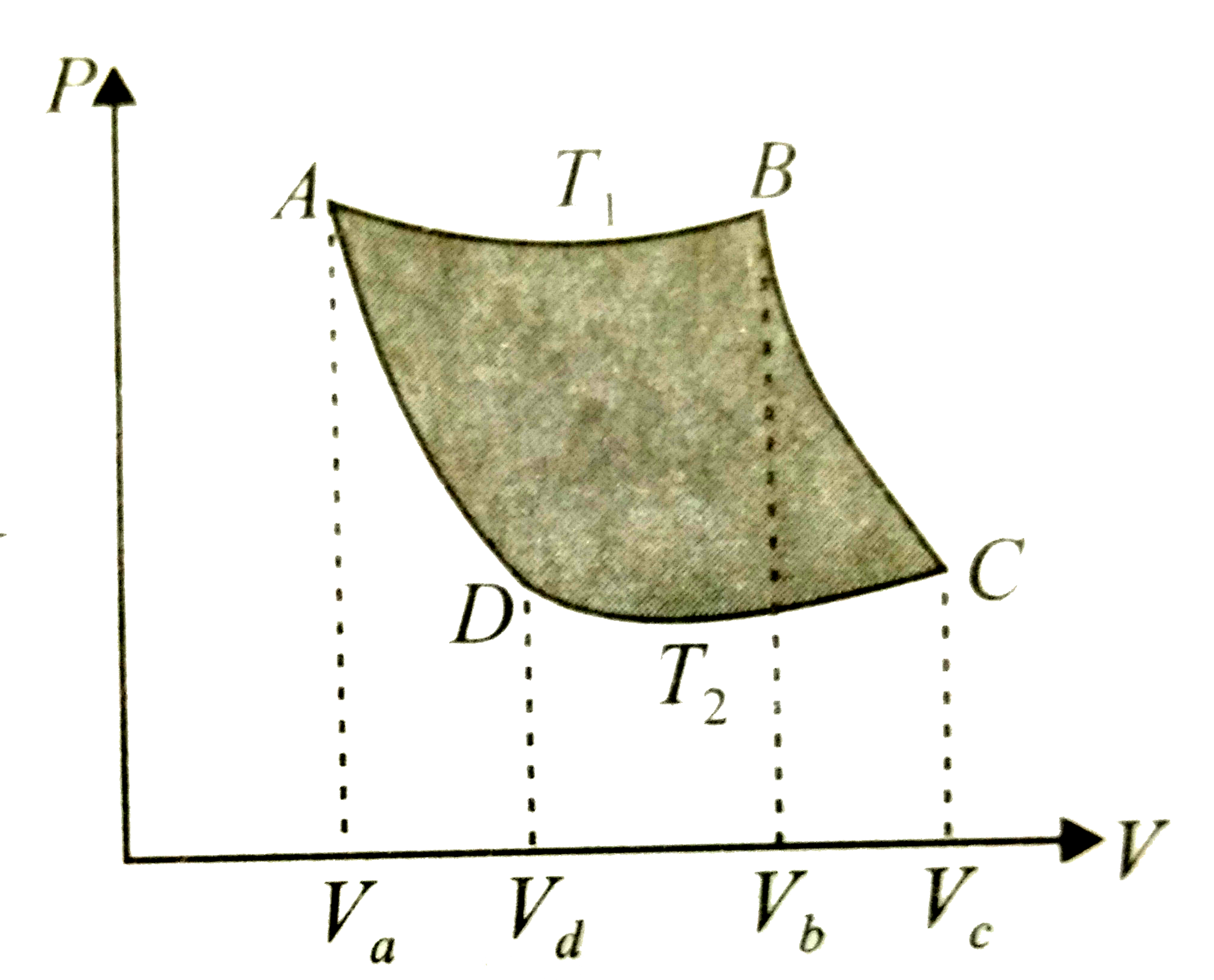Statement-1: Temperature of a system can be increased without supplying heat.
Statement-2: If the initial volume of system is equal to final volume in a process then work done is necessarily zero.
Statement-3: If an adiabatic curve for a gas intersect with an isothermal curve for the same gas then at the point of intersection, the ratio of slope of the adiabatic and the isothermal curve is γ.
FTF
TFT
TFF
TTT
The correct Answer is:B
Step by step video, text & image solution for Statement-1: Temperature of a system can be increased without supplying heat. Statement-2: If the initial volume of system is equal to final volume in a process then work done is necessarily zero. Statement-3: If an adiabatic curve for a gas intersect with an isothermal curve for the same gas then at the point of intersection, the ratio of slope of the adiabatic and the isothermal curve is gamma. by Physics experts to help you in doubts & scoring excellent marks in Class 12 exams.
Updated on:21/07/2023Topper's Solved these Questions
- THERMODYNAMICSBOOK - AAKASH INSTITUTECHAPTER - THERMODYNAMICSEXERCISE - Assignment (Section-I) Subjective Type
5 Videos
- THERMODYNAMICSBOOK - AAKASH INSTITUTECHAPTER - THERMODYNAMICSEXERCISE - Assignment (Section-J) Aakash Challengers Questions
5 Videos
- THERMODYNAMICSBOOK - AAKASH INSTITUTECHAPTER - THERMODYNAMICSEXERCISE - Assignment (Section-G) Integer Answer Type Questions
3 Videos
- THERMAL PROPERTIES OF MATTERBOOK - AAKASH INSTITUTECHAPTER - THERMAL PROPERTIES OF MATTEREXERCISE - Assignment (Section-J) Akash Challengers Questions
7 Videos
- UNITS AND MEASUREMENTSBOOK - AAKASH INSTITUTECHAPTER - UNITS AND MEASUREMENTSEXERCISE - ASSIGNMENT (SECTION - D)
15 Videos
Similar Questions
The final volume of a system is equal to the initial volume in a certain process. Is the work done by the system necessarily zero? Is it necessarily nonzero?
View SolutionStatement -1 : In following figure curve (i) and (iv) represent isothermal process while (ii) & (iii) represent adiabatic process.
_E01_162_Q01.png)
Statement - 2 :The adiabatic at any point has a steeper slope than the isothermal through the same point .
View Solution
Knowledge Check
Two moles of a gas expand reversibly and isothermally at temperature of 300K. Initial volume of the gas is 1 L while the final pressure is 4.926 atm . The work done by gas is
A−11488.28JB−15036.28JC−22488.28JD−33488.28JStatement-1: The amount of work done in the isothermal expansion is greater than work done in the adiabatic system for same final volume.
Statement-2: In the adiabatic expansion of a gas temperature and pressure both decrease due to decrease in internal energy of the system.AStatement-1 is True, Statement-2 is True, Statement-2 is a correct explanation for Statement-1BStatement-1 is True, Statement-2 is True, Statement-2 is NOT a correct explanation for Statement-1CStatement-1 is True, Statement-2 is False.DStatement-1 is False, Statement-2 is True.RMS speed of a monoatomic gas is increased by 2 times. If the process is done adiabatically then the ratio of initial volume to final volume will be
A4B(4)2/3C23/2D8
Statement-1: If the pressure and temperature of a gas sample are doubled then the volume of the gas will remain unchanged.
Statement-2: Molar specific heat for an adiabatic process is zero.
Statement-3: Heat energy is a path function.
View SolutionStatement-1: For a gaseous system Cp is always greater than Cv
Statement-2: Work done by a gas at constant volume is zero.
View SolutionTwo different adiabatic parts for the same gas intersect two isothermals at T1andT2 shown in P-V diagram . Then the ratio of VaVb will be

View SolutionIn adiabatic expansion of monoatomic ideal gas, if volume increases by 24% then pressure decreases by 40%.
Statement-2 : For adiabatic process PVγ = constant
View SolutionStatement-1: Two gases at same pressure, volume & temperature are compressed to same volume. The first isothermally and second adiabatically, greater work is done on the gas for an adiabatic process.
Statement-2: Final temperature for gas going under isothermal process is more than gas going under adiabatic process.
View Solution
